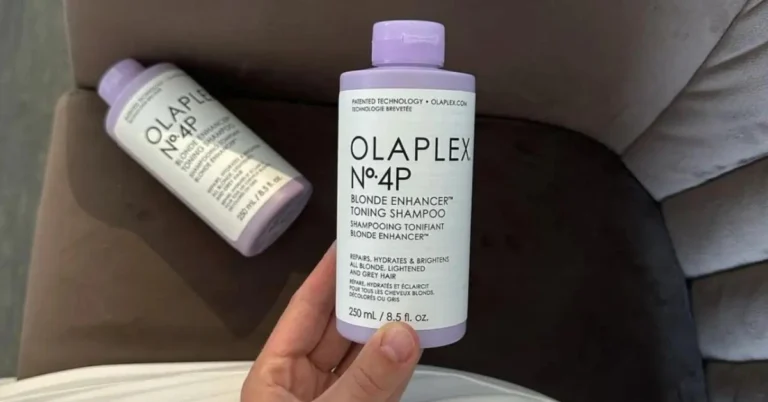Wondering whether combining lactic acid and retinol is your secret to achieving flawless skin without encountering any irritation or issues? Fear not, because your path to revolutionizing your skin ought to be devoid of any doubts or reservations.
In the world of skincare, lactic acid, and retinol are like superstar ingredients, each with its own incredible benefits. But the real magic happens when you combine them effectively. What if I told you there’s a way to unlock their full potential safely, without the guesswork?
In this article, we’re about to unveil the secret to supercharging your skincare routine while avoiding common pitfalls. We’ll dive deep into the unparalleled benefits and reveal how, with the right knowledge and approach, you can confidently blend lactic acid and retinol for radiant, youthful skin. Say goodbye to hesitation, and get ready to elevate your skincare game like never before!
Table of Contents
Can You Use Lactic Acid and Retinol Together?
When it comes to skincare, combining the right ingredients is crucial for achieving desired results. Lactic acid and retinol are two popular ingredients that can offer a range of benefits when used together. But can you combine these two skincare ingredients safely?
The answer is yes. According to The Blushing Bliss and RainbowBeauty, lactic acid and retinol can work together to boost the results of each other. While these two ingredients both help to exfoliate the skin, they function in different ways. Retinol speeds up skin cell turnover, which helps improve the appearance of wrinkles, fine lines, and uneven skin tone. Lactic acid, on the other hand, is an alpha-hydroxy acid (AHA) known for its gentle exfoliating properties and ability to hydrate the skin.
It’s essential to understand how to layer these ingredients properly. Moreover, it is worth noting that when trying new combinations, it’s always a good idea to patch test and pay close attention to how your skin responds. If you experience irritation, reduce the frequency or discontinue the use of one or both ingredients.
There are a few guidelines to follow when layering lactic acid and retinol:
- Always apply lactic acid first, followed by the retinol.
- If you’re new to using both ingredients, try incorporating them into your routine gradually to minimize potential irritation.
- Wait a few minutes between applying lactic acid and retinol to allow the first product to absorb fully.
- As retinol and lactic acid can be drying, ensure you moisturize with a hydrating cream or serum afterward.
When used correctly, combining lactic acid and retinol can be a powerful skincare duo, allowing individuals to achieve smoother and more radiant skin. Remember, patience is key. Progress may not be apparent immediately, but with consistent use, the benefits should become apparent over time.
Lactic Acid: Benefits and Uses

Lactic acid is a chemical exfoliant that helps to improve skin tone, and texture, and reduce the appearance of fine lines by sweeping away dead skin cells. It is also known to prevent breakouts by keeping pores clear and fading acne scarring, dark spots, and hyperpigmentation.
One of the remarkable benefits of lactic acid is its ability to boost skin plumpness. Research has shown that a 5% lactic acid formula applied twice a day can improve skin thickness and firmness. Moreover, regular use of lactic acid can stimulate the renewal of collagen, a fiber that helps keep skin firm. This can result in smoother and softer fine lines, wrinkles, and fading sun spots or age spots.
Another advantage of lactic acid is that it increases cell turnover and helps eliminate accumulated dead skin cells on the topmost layer of the skin (epidermis). Using lactic acid in 12% concentrations can lead to firmer and more radiant skin.
Retinol: Benefits and Uses

Retinol, a form of vitamin A, is a popular ingredient in skincare products due to its many benefits. As an ingredient in creams, lotions, and serums, retinol provides anti-aging effects and can help clear acne.
When it comes to combining retinol with lactic acid, a type of alpha hydroxy acid (AHA), opinions are divided. Some dermatologists claim that it’s acceptable to use these powerful active ingredients together, whereas others advise caution. It’s vital to understand the correct way to combine these ingredients, as they can be potent and should be used sparingly.
Why is retinol such a sought-after ingredient in skincare? For starters, it has the ability to support aging skin by reducing the appearance of fine lines and wrinkles. Additionally, retinol aids in skin rejuvenation by promoting cell turnover and improving overall texture. As a result, retinol has become a go-to ingredient for people looking to maintain youthful and healthy-looking skin.
Furthermore, retinol is known for its acne-fighting properties. It can help unclog pores, reduce inflammation, and promote a smooth and clear complexion. This makes retinol suitable for individuals with acne-prone skin or those seeking a solution for occasional breakouts.
How to Use Lactic Acid and Retinol Together Safely

Combining lactic acid and retinol in your skincare routine can offer a range of benefits. Although some dermatologists have differing opinions, many agree that it’s possible to use both ingredients together safely when done correctly. However, it is essential to follow a few simple steps to make sure you get the most out of these powerful skincare ingredients without causing irritation.
First, ensure that you begin with a gentle cleanser. A clean foundation is essential before applying potent ingredients like lactic acid and retinol. After cleansing, it is crucial to wait at least 20 minutes before applying either of these products to prevent any irritation.
Next, consider the order in which you apply these ingredients. It is generally suggested to use lactic acid in the morning and retinol in the evening, as retinol should not be applied during the day due to its photosensitivity. Using these products at separate times can help minimize the risk of irritation while still taking advantage of their benefits.
Moreover, it is essential to start slowly and monitor your skin’s response. You can begin by using lactic acid and retinol on alternate days, gradually increasing the frequency as your skin adjusts. Pay close attention to your skin’s reactions and adjust your regimen accordingly if you experience any sensitivity or dryness.
Lastly, don’t forget the importance of wearing sunscreen. Retinol and lactic acid can both increase your skin’s sensitivity to the sun, so it’s vital to use a broad-spectrum SPF during the day to protect your skin.
Avoiding Common Mistakes

When it comes to the powerful duo of lactic acid and retinol in your skincare routine, it’s easy to get carried away in the pursuit of radiant skin. I’ve been there, and I’ve learned some valuable lessons along the way. To help you make the most of these potent ingredients without stumbling into common pitfalls, here are some essential tips:
- Overuse and Overexfoliation: It’s tempting to use lactic acid and retinol every day, but don’t. Start slow, with once or twice a week, and gradually increase frequency as your skin adjusts.
- Skipping Sunscreen: Never skip sunscreen when using lactic acid and retinol. These ingredients can make your skin more sensitive to UV rays, so SPF is your best friend.
- Mixing Incompatible Ingredients: Avoid combining lactic acid and retinol with other potent actives like vitamin C or benzoyl peroxide in a single routine. Layering them can cause irritation.
- Ignoring Your Skin’s Signals: Pay attention to how your skin reacts. If you experience excessive dryness, redness, or peeling, dial back on both ingredients and focus on hydration.
- Starting Too Soon: If you’re new to skincare, don’t jump into lactic acid and retinol right away. Give your skin time to acclimate with milder products first.
Pro Tip: Consider buffering. Apply a layer of moisturizer before lactic acid or retinol to minimize potential irritation while still reaping the benefits.
Incorporating lactic acid and retinol into your skincare routine can be a game-changer, but do it wisely. Avoid these common missteps, listen to your skin, and you’ll be on your way to a smoother, more radiant complexion.
Side Effects of Lactic Acid and Retinol
In my journey towards better skin using lactic acid and retinol, I’ve encountered a few bumps along the way. It’s crucial to be aware of potential side effects and how to handle sensitivity when incorporating these potent ingredients into your skincare routine. Here’s what I’ve learned:
- Dryness and Peeling: Lactic acid and retinol can cause dryness and peeling, especially in the early stages. To combat this, always follow up with a rich moisturizer to keep your skin hydrated.
- Redness and Irritation: Some redness and irritation are normal as your skin adjusts. However, if it becomes severe or persistent, consider reducing the frequency of use and consult a dermatologist if needed.
- Sensitivity to Sunlight: Lactic acid and retinol can make your skin more susceptible to sunburn. Apply a broad-spectrum sunscreen daily, even on cloudy days, to protect your skin.
- Increased Sensitivity: Be cautious when combining lactic acid and retinol with other potentially irritating products. Simplicity is often key to minimizing sensitivity.
My Advice: Introduce lactic acid and retinol slowly into your routine. Start with lower concentrations and use them on alternating nights to give your skin time to adapt.
FAQ:

What goes first lactic acid or retinol?
Apply lactic acid before retinol. Lactic acid is an alpha hydroxy acid that exfoliates the skin, while retinol is a vitamin A derivative that speeds up cell turnover.
What not to mix with lactic acid?
Avoid mixing lactic acid with vitamin C, as it can be too harsh for the skin. Use these potent actives together only once enough time has passed between applications.
How do you use lactic acid and retinol ordinary?
Start by choosing a lactic acid concentration: The Ordinary Lactic Acid 5% + HA or The Ordinary Lactic Acid 10% + HA. Start using The Ordinary lactic acid serum once a week if you are new to acids, then slowly increase usage as your skin builds a tolerance. Apply lactic acid before retinol.
What acid to avoid when using retinol?
Avoid using beta-hydroxy acid (BHA), commonly known as salicylic acid, with retinol. It can cause excessive dryness and irritation to the skin.
Can you use lactic acid niacinamide and retinol together?
Yes, you can use lactic acid, niacinamide, and retinol together. Niacinamide helps hydrate the skin, reducing the risk of irritation caused by retinol. Apply lactic acid before retinol. Use niacinamide after lactic acid and before retinol.
What can you layer with lactic acid?
You can layer hyaluronic acid, moisturizer, and sunscreen with lactic acid. Hyaluronic acid helps hydrate the skin, while moisturizer locks in the moisture. Sunscreen is essential to protect the skin from UV damage.
Can I use lactic acid during the day and retinol at night?
Yes, you can use lactic acid during the day and retinol at night. However, it is recommended to use sunscreen during the day, as lactic acid can make the skin more sensitive to the sun.
What to layer with retinol?
You can layer moisturizer, hyaluronic acid, and facial oil with retinol. Moisturizer helps lock in moisture, while hyaluronic acid helps hydrate the skin. Facial oil can help soothe the skin, reducing the risk of irritation caused by retinol.
Should I use retinol or lactic acid?
It depends on your skin concerns. Retinol is effective for reducing the appearance of wrinkles and fine lines, while lactic acid is effective for exfoliating the skin and improving skin texture. You can use both, but it is recommended to start with one and gradually introduce the other.
What makes lactic acid worse?
Overuse of lactic acid can make the skin worse. It can cause excessive dryness, irritation, and sensitivity to the sun. It is recommended to start using lactic acid once a week and gradually increase usage as your skin builds tolerance.
Does lactic acid react with anything?
Lactic acid can react with certain ingredients, such as vitamin C and benzoyl peroxide, causing irritation and sensitivity to the skin. It is recommended to avoid using these ingredients together with lactic acid.
Can you use retinol after a lactic peel?
It is recommended to wait at least 24 to 48 hours before using retinol after a lactic acid peel. This allows the skin to recover from the peel and reduces the risk of irritation caused by retinol.
Can I use the ordinary lactic acid everyday?
It is not recommended to use The Ordinary Lactic Acid every day, especially for those new to acids. Start by using it once a week and gradually increase usage as your skin builds a tolerance. Overuse of lactic acid can cause excessive dryness, irritation, and sensitivity to the sun.
Should I use the ordinary lactic acid at night or day?
It is recommended to use The Ordinary Lactic Acid at night. Lactic acid can make the skin more sensitive to the sun, so it is important to use sunscreen during the day. Using lactic acid at night also allows the skin to recover and renew while you sleep.
If you liked this blog article about the combination of Lactic Acid and Retinol, don’t forget to leave us a comment down below to tell us about your experience.





